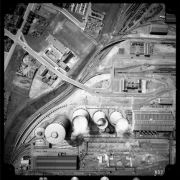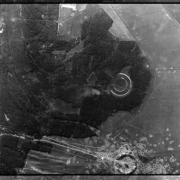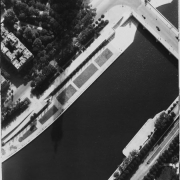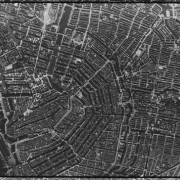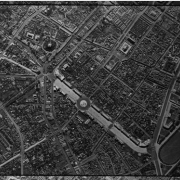Interpreting an Aerial Photograph
When looking at the aerial photograph below what do you see?
Consider the different shapes and what they might be. Is it a large or small scale image? Does this knowledge change how you perceive certain shapes? Is the image taken directly from above or at an angle? Are there any shadows? Is there any variation in tone? How are different features related to each other?
These are the questions a photographic interpreter or imagery analyst would ask when studying an aerial image in order to extract useful information from it.
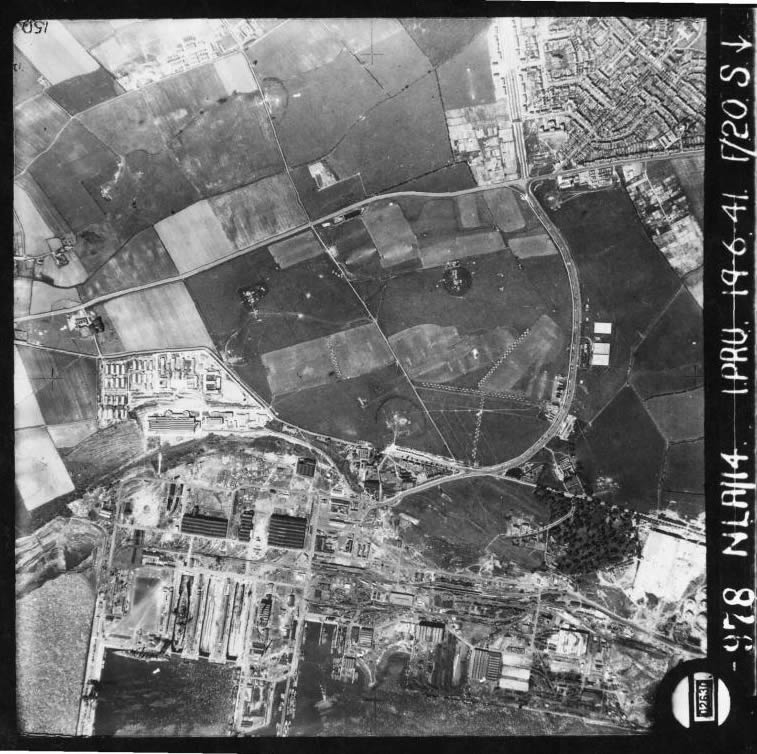
Stereoscopic Viewing
A three-dimensional impression of the features depicted in an aerial photograph can be obtained by viewing two correctly oriented, overlapping images with a stereoscope.
A stereoscope is a binocular optical instrument which allows the viewer to look at two photographs simultaneously, so that features which are not noticeable in 2-D to appear to have relief. Aerial survey photographs normally have an overlap of 60% along the line of flight, to permit stereoscopic viewing.


